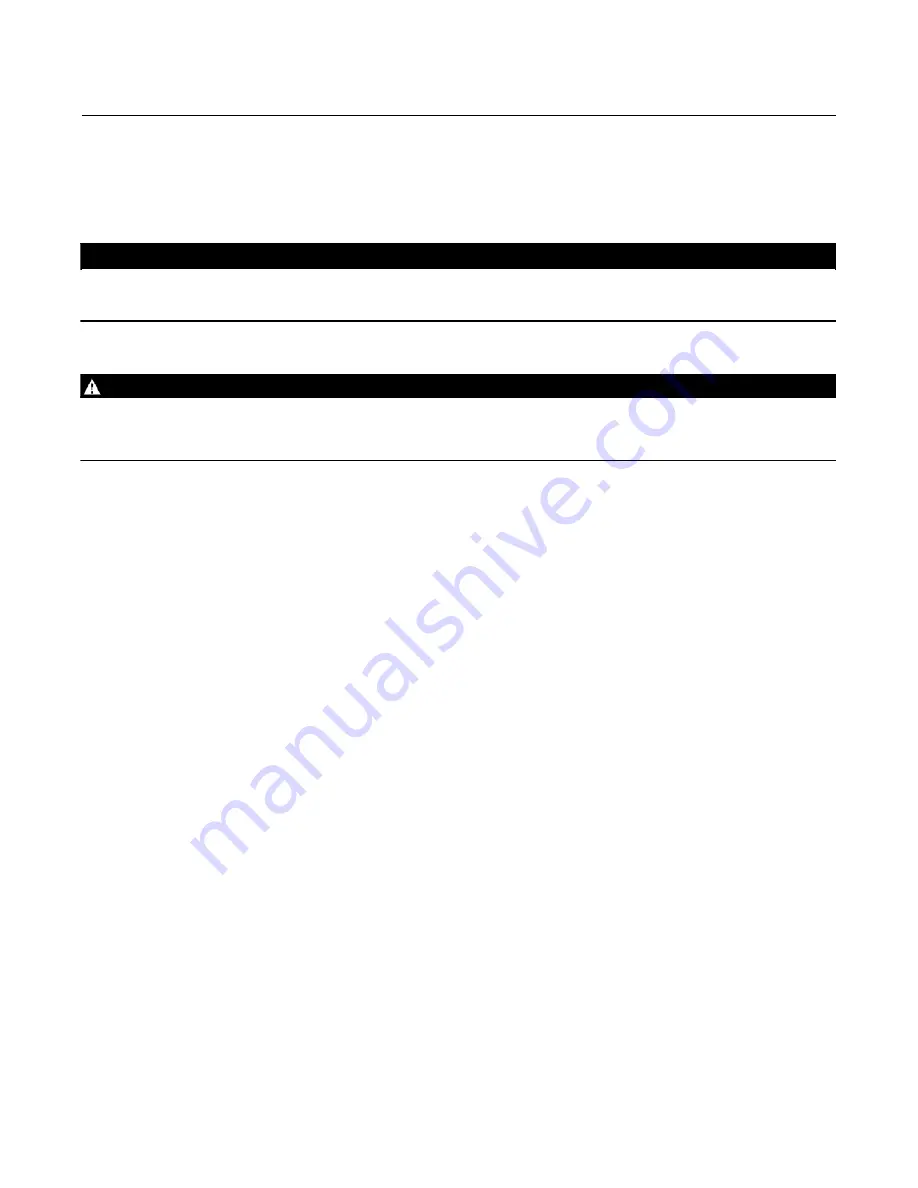
Instruction Manual
D103373X012
87000 Valve
November 2011
4
2. Use 6.4 mm (1/4 inch) O.D. tubing or equivalent for all air lines. If the air line exceeds 8 m (25 ft) in length, 9.5 mm
(3/8 inch) tubing is preferred. For proper operation, air lines must not leak. Air pressure should not exceed 2.5 bar
(35 psig).
3. Tri-clamp connections should line up properly to provide a tight seal.
CAUTION
Do not place the valve in a vise. This will damage the exterior of the valve body and possibly the end connections of the
valve.
WARNING
If there is evidence of process fluid under pressure leaking from the joint, retighten the valve body/joint nuts. Return to the
Warning at the beginning of the Installation and Maintenance section to ensure proper steps have been taken to isolate the
valve and relieve process pressure.
Disassembly of Valve
Refer to figure 3.
1. Depressurize the pipeline and valve interior. Disconnect air lines from the positioner.
2. Loosen the tri-clamp connections and remove the valve from the line.
3. Remove the hex head cap screws (key 12) that secure the valve body to the lower bonnet (key 3) and the upper
bonnet (key 2). Remove the upper bonnet, actuator and positioner from the valve. Be sure the ceramic ball (key 5)
does not fall out of the assembly and get lost.
4. In order to remove the shaft (key 4), unscrew the alignment pin (key 15) and remove the retaining ring (key 11).
Reassembly of Valve
Refer to figures 3, 4, and 5.
1. Reassemble the valve in reverse order using the instructions above. The valve body is designed so it cannot be
assembled improperly. Make sure the beveled edge of the anvil (key 8) points toward the ceramic ball (key 5). Make
sure the tapered end of the sleeve bushing (key 6) also points towards the ceramic ball.
2. If the sleeve (key 7) seating surface is distorted, the sleeve should be replaced, or be rotated to use a new seating
surface.
3. New O-rings (keys 9 and 50) should be installed after suitable lubrication (e.g. food grade) of the shaft O-ring (key
50).
4. Make sure the alignment pin (key 15) is tight and the shaft (key 4) moves easily.
5. Refer to separate instructions for the actuator (D103352X012) and positioner assembly and maintenance.
6. Place the actuator yoke over the shaft (key 4). While tilting the actuator back, drop the yoke drive nut (key 16) over
the shaft (key 4). Run the locknut (key 27), and travel indicator (key 58) down as far as possible onto the shaft (key
4).
7. Carefully place the actuator yoke in a vertical position and thread the actuator stem onto the shaft, spin the
actuator onto the shaft as far as it will go before adjusting the bench range. Refer to Baumann Pneumatic Actuators
instruction manual, D103352X012.






























